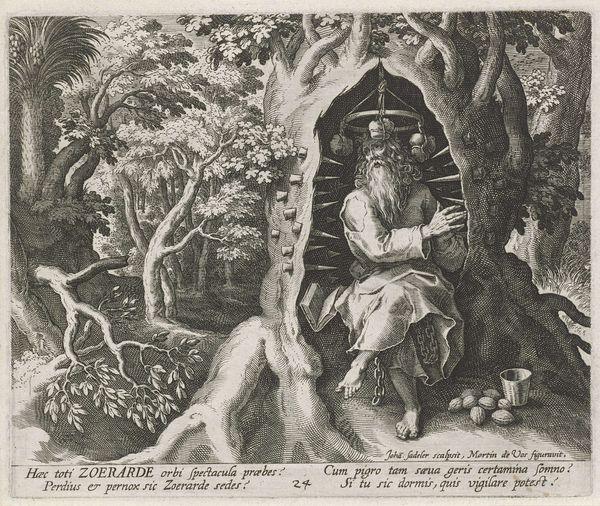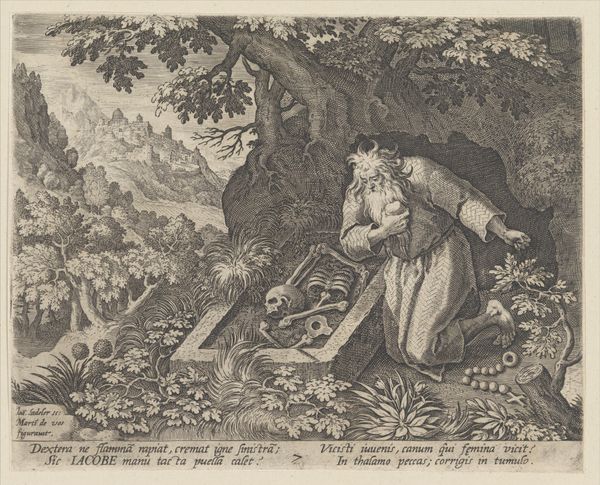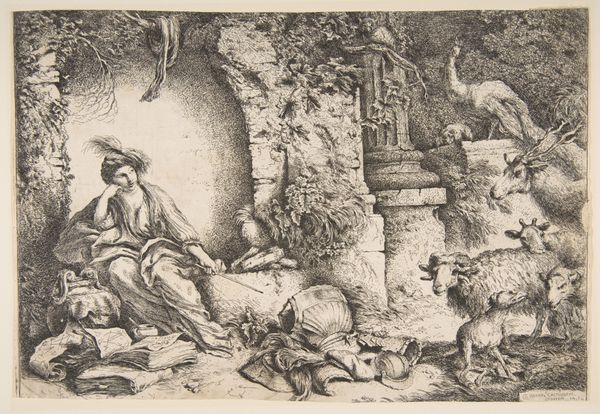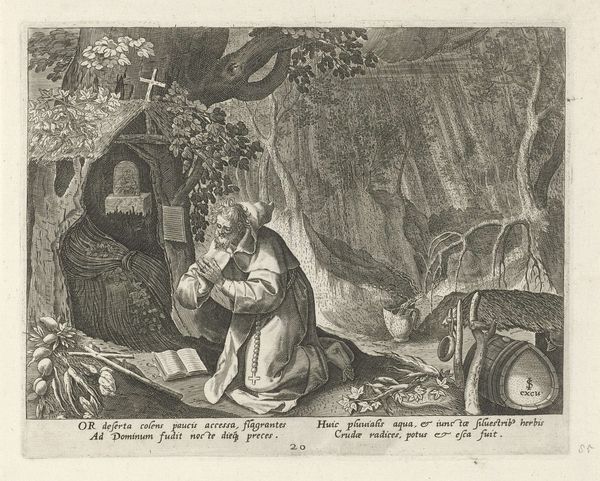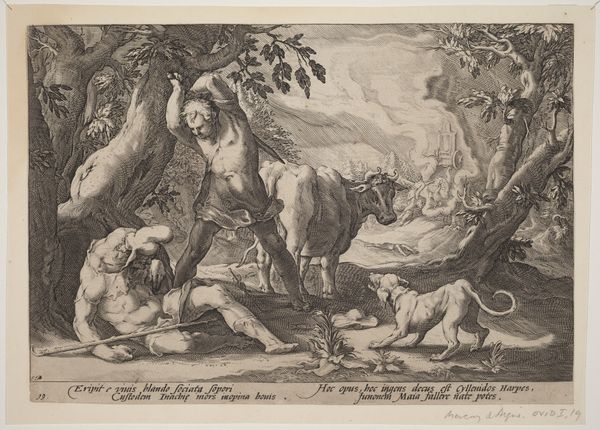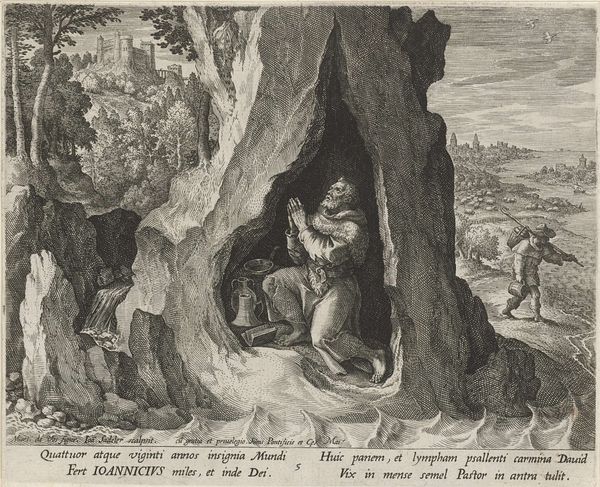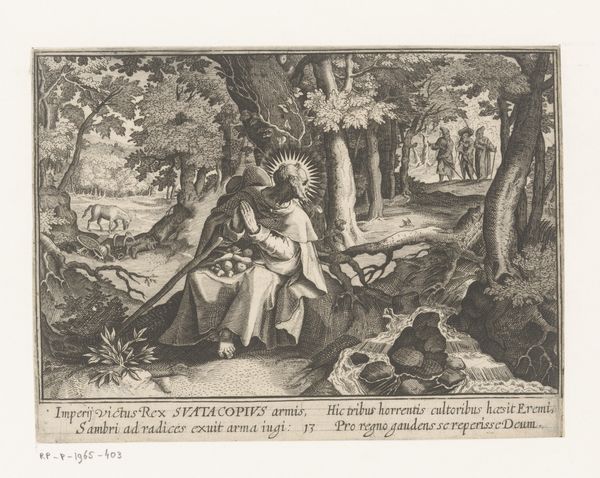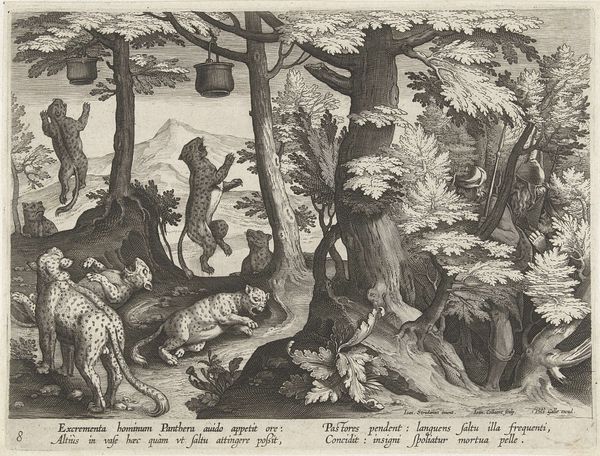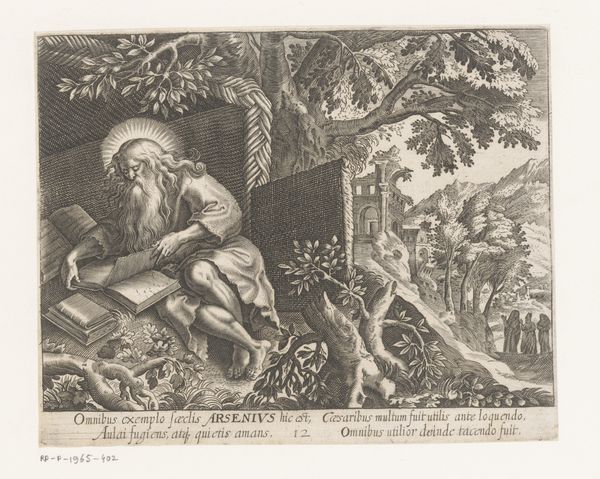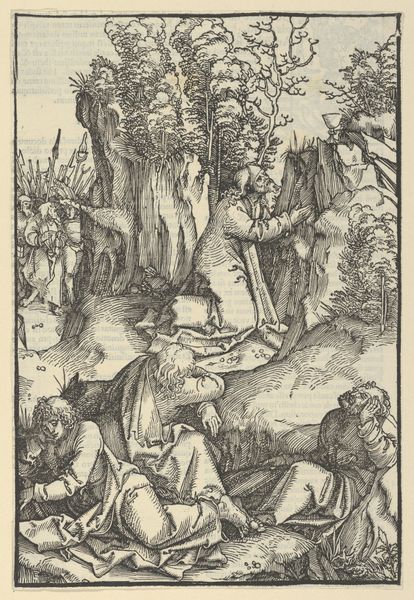
print, engraving
# print
#
landscape
#
figuration
#
forest
#
genre-painting
#
history-painting
#
northern-renaissance
#
engraving
Dimensions: width 198 mm, height 163 mm
Copyright: Rijks Museum: Open Domain
Editor: This is "Saint Blasius of Sebaste as a Hermit," an engraving by Johann Sadeler I, made in 1594. What strikes me is the contrast between the serene figure of the saint in his cave and the hunting scene playing out in the background. It feels symbolic somehow. What do you see in this piece? Curator: It is indeed rich in symbolism! Blasius, a healer, retreating to a cave becomes a potent image of spiritual refuge. Notice the animals gathered around him, even a bear. Animals have been symbols for specific behaviors for ages. His cave becomes a sanctuary in contrast to the hunt; he's communing with nature in peace, a sharp contrast to the human hunt in the landscape. Do you think this resonates today? Editor: Absolutely, this dichotomy speaks to our relationship with nature, then and now. The idea of finding peace away from the violence in the hunt depicted really rings true. I didn't initially think of the bear as symbolic; I thought it was only about wildlife. Curator: Well, it is a reminder, too, of the "beast within" tamed through faith, right? Consider how often Saint Jerome, another hermit figure, is depicted with a lion – this taming of base instinct through spirituality is not unique. So what does it mean to see Blasius this way? Editor: Now that you mention Saint Jerome, the composition makes much more sense. Maybe that peace isn't passive but an active choice to pursue peace in this specific cultural memory! Curator: Precisely. It asks us to consider: can inner peace exist alongside societal conflict, and what’s our place within it? Editor: I see it! Thank you – I didn’t notice the saint was presented as an antithesis of human conflict, so deeply he connects to the imagery we both are remembering.
Comments
No comments
Be the first to comment and join the conversation on the ultimate creative platform.
